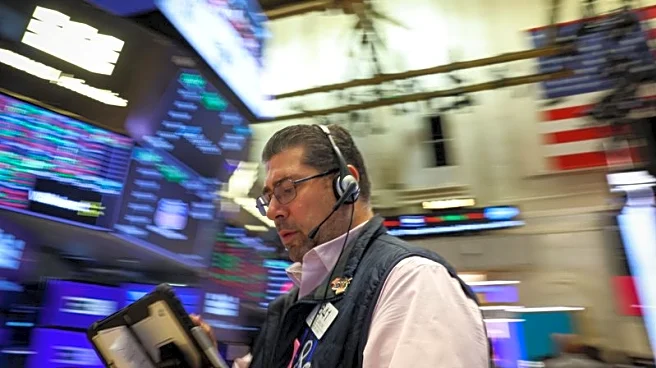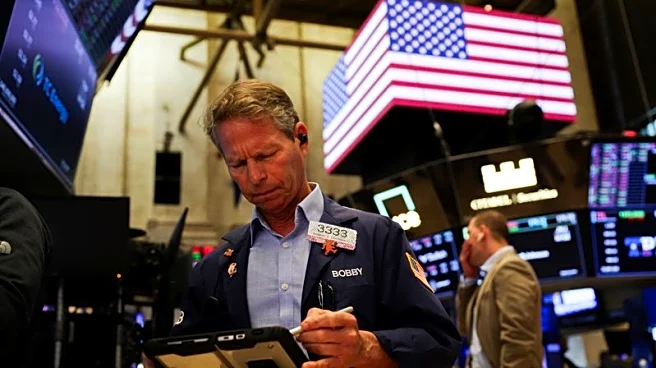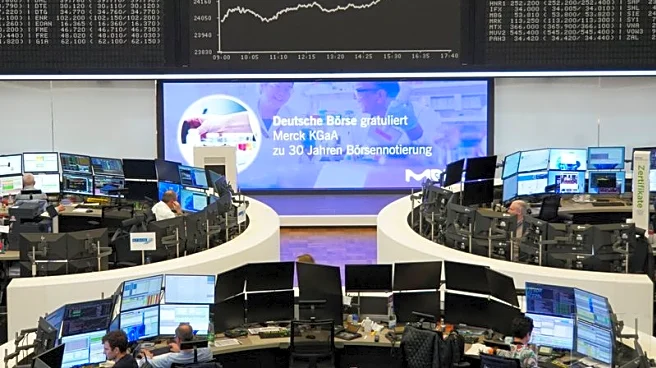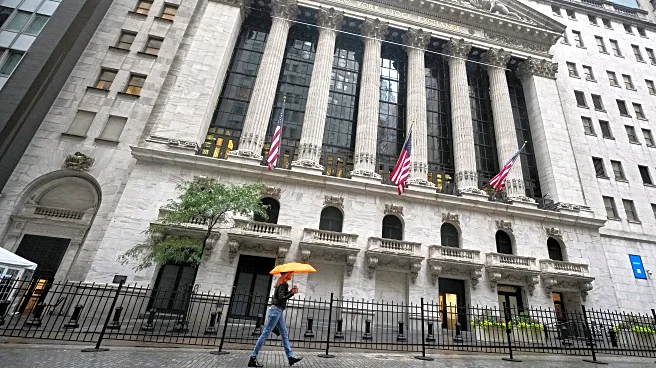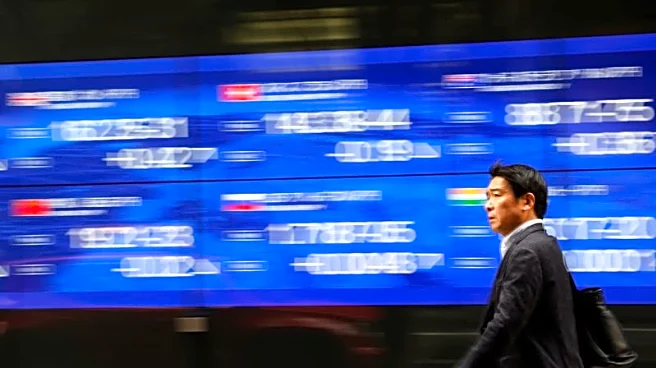What's Happening?
Despite a rise in stock futures on Monday, the CBOE Volatility Index (VIX), known as Wall Street's fear gauge, remained above the 20 handle, indicating elevated market stress. Last week, the VIX exceeded
25 due to increased tensions between the U.S. and China and emerging credit risks. However, as stocks rallied, the VIX began to decline, driven by positive sentiment from Apple's performance and the potential resolution of the U.S. government shutdown. Typically, stocks and the VIX have an inverse relationship, but their current correlation suggests a potential realignment. UBS strategist Maxwell Grinacoff noted that either SPX realized volatility needs to increase, or the VIX should normalize to higher lows. Morgan Stanley's Mike Wilson emphasized the need for de-escalation in U.S.-China trade tensions to mitigate market risk.
Why It's Important?
The persistence of high volatility despite market stabilization is significant as it reflects underlying investor concerns about geopolitical tensions and credit risks. This situation could lead to increased demand for protective measures, such as put options, impacting market dynamics. The potential resolution of the U.S. government shutdown and positive earnings reports could alleviate some stress, but the ongoing trade tensions between the U.S. and China remain a critical factor. The elevated VIX suggests that investors are cautious, which could affect investment decisions and market liquidity. A realignment of the VIX and stock prices could signal a shift in market sentiment, influencing future trading strategies.
What's Next?
Market participants will be watching for any developments in U.S.-China trade negotiations, as these could significantly impact volatility and investor confidence. The release of earnings reports from major companies will also be crucial in shaping market sentiment. If tensions ease and earnings are positive, the VIX may continue to decline, leading to increased market stability. However, any negative news could exacerbate volatility, prompting investors to seek further protection. Stakeholders will need to navigate these uncertainties carefully to optimize their investment strategies.



